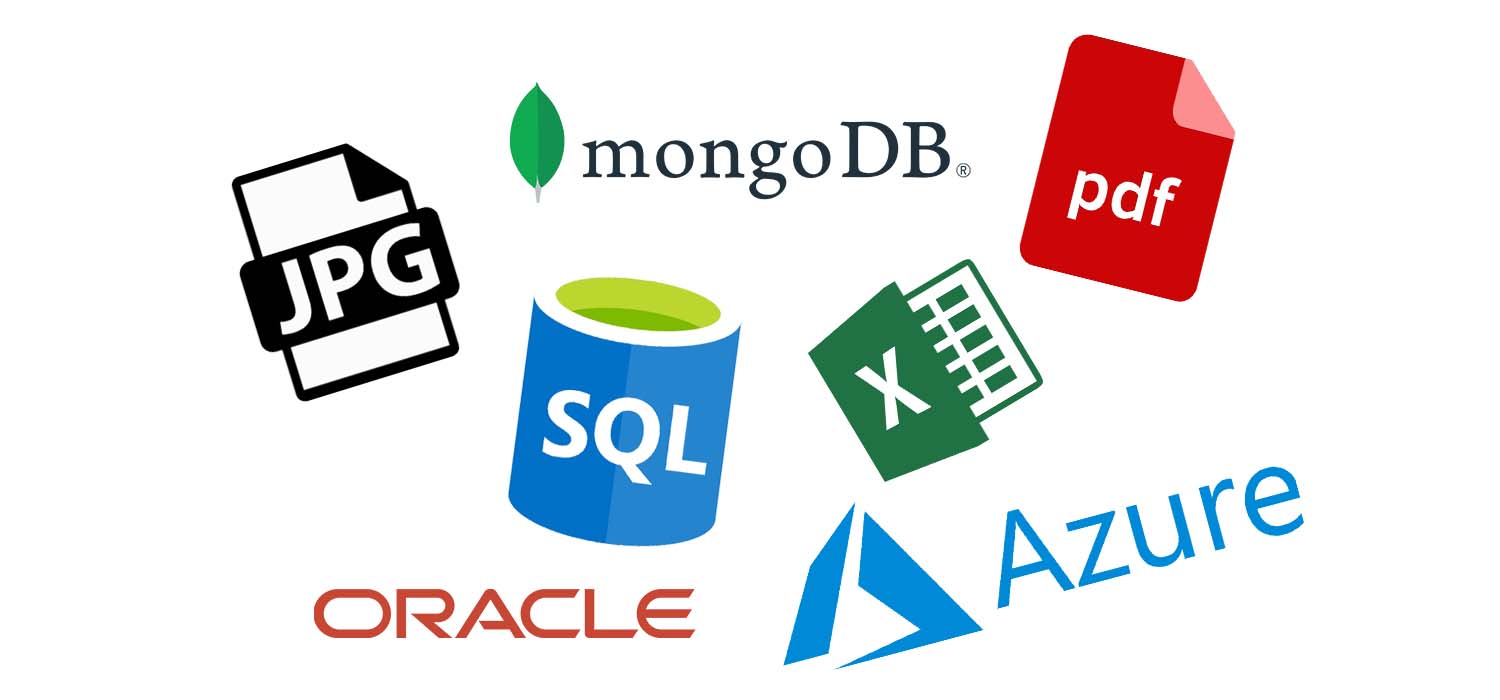Complex might be simple: structured vs unstructured data
In 2018, the global data set was about 33 zettabytes (ZB), and in 2025 this figure will grow to 175 ZB. Such a huge amount of by humans in just a couple of decades must impress. Most of this data (about ) is unstructured. In this article, we explain in simple terms what structured and unstructured data are, what their gaps are, and how they can be used in different areas of human activity. Get ready, it will be interesting!

Feautures of structured data
Structured data is presented in tables. That is, they are part of relational databases and can easily penetrate the structure and algorithms of the RDBMSs. Thanks to this, they are easy to find, count, process and highlight the interconnections between them. Structured data can only be used for the intended purpose. For example, when ordering something on the Internet we always send some personal data to the database of an online store. After, the system brings all the information, which provides both efficiency and safety for the buyer. That’s why you don’t have to worry about potential risks when making a purchase.
The analysis of structured data takes place in the data warehouses (DW). This is a storage that is used by an enterprise to analyze and process large amounts of data.
To work with structured data effectively, IBM created the Structured Query programming Language (SQL). It was this programming language that formed the basis for the development of relational databases and DWs.
Features of unstructured data
Generally, the difference between both structured and unstructured data is the form of recording. While all structured data is covered in a single table, unstructured data interconnections are only covered within the native data format, be it an image, text, audio file, or whatever.
The processing of unstructured data by classical methods is impossible because they are in their “raw”, original form.
To work with it we use non-relational databases (NoSQL). The term “NoSQL” has been expanded to mean “Not only SQL”, which means support for potential SQL interfaces in every non-relational database engine. Application developers who use NoSQL solutions do not necessarily exclude relational databases, but instead, see the value of using each of the data stores correctly to solve the corresponding task.
Based on the data in the raw form is a lot of space, special storage systems called data lakes are used to store them.

The Gap: structured versus unstructured
Structured data appeared much earlier than unstructured data. As a result, we have enough tools for working with the first, while there are much fewer tools for analyzing unstructured data (many of them are just being developed). The most popular tools for working with structured data:
- PostgreSQL. It is a free and open source database management system. The system supports SQL and JSON queries and all popular programming languages (Python, Java, etc.).
- MySQL. Possibly the most popular open source system running on a server.
- SQLite. A lightweight system that “embeds” in the software product, so that it does not depend on the server.
- Microsoft SQL Server. RDBMS developed by Microsoft. Allows you to store and work with structured data at the request of third-party software.
- Oracle. System developed by Oracle Corporation. Its main feature is the multiverse of data, which allows you to manage parallel transactions.
- OLAP-applications. The components of software products of the Business Intelligence class, OLAP-applications allow you to work with huge arrays of data, structured according to a multidimensional principle.
Until recently, unstructured data management had to be manual which took a lot of effort and time. However, with the development of machine learning we’ve got tools for selecting, analyzing, and managing unstructured data. Let’s give some examples.
- MongoDB is a classic example of NoSQL. It is a document-oriented system that does not require the description of table schemas. Uses JSON-like documents.
- Apache Hadoop is another example of a platform for processing large amounts of unstructured data. Hadoop does not require a predefined structure of stored data and allows you to process large amounts of information and export it to relational databases, which means structuring unstructured data.
- Microsoft Azure is the development of Microsoft for cloud computing in distributed data centers. The data itself is written to the Azure Cosmos DB NoSQL database.
In addition to the tools used and the features of searching and processing data, there are some more differences that you need to understand:
- data formats;
- data models;
- storage methods;
- databases (SQL and NoSQL);
- the nature of the data.
Data formats
All structured data is stored as text and numeric values. Usually, CVS and XML formats are used for this. The format is predefined in the data model.
Unstructured data is presented in native formats. These are MP3, WAV, OGG, FLAC, etc. for audio, JPG, PNG, TIFF, etc. for images, PDF, DOCX, TXT for any writings and e-mails, post and comments and other formats.
Data models
The structured data model is always organized as clearly as possible. It is presented in the form of fields of tables and data that should be stored in the tables (such and such data in such and such field and not otherwise). There are both advantage and a disadvantage here. On the one hand, such an organization of data simplifies their search and processing, but a schema violation can lead to numerous errors and even data loss.
This does not work with unstructured data. Their model is flexible, because it allows you to store information in native formats, but this complicates working with data.
Storage methods
When it comes to structured data, data warehouses are where they are stored. These are repositories with a clear and understandable structure that is not subject to change. Tampering with the structure of the data warehouse can lead to data loss, the recovery of which will require a considerable resource.
Unstructured data storage in native formats takes up much more space. Therefore, data lakes are used for this. These repositories allow you to store an almost unlimited number of raw files.
It should be noted that both options involve cloud storage. There is also a hybrid architecture called data lakehouse that combines the features of both data warehouses and data lakes.
Databases (SQL and NoSQL)
Structured data in relational databases is stored as records in tables. In addition, each column of the table is marked with a label that indicates what type of data should be stored in this column. The logic of allocating data types to columns forms the schema of the table.
In NoSQL databases, tables are replaced by data collections that contain documents (files in their original form). As long as the data is not ordered in a table, it is possible to store different data models. It is also important that there is no relationship between them. This makes it possible to increase the speed of queries and store large amounts of information, however, duplicate data often occurs in NoSQL databases.
The nature of the data
They also call structured data as quantitative data, meaning that there are always clear numbers and text, making it easy to count. The methods of working with such data are quite clear. These are classification based on common features, clustering, determining relationships between variables, etc.
Unstructured data is considered to be qualitative. This means that the nature of this data is subjective, so the information you have cannot be processed by standard methods. For the analysis of unstructured data, we use artificial intelligence to identify patterns and summarize or divide data into certain types.

Semi-structured data: happy medium or not?
In the context of this article, we cannot ignore semi-structured data. This is a relatively new type of data, also known as schemaless, that involves partial hierarchization of data, but does not belong to a tabular model. Such a specific structure is used, for example, by XML and JSON, EDI messages, E-mails, etc. It is used widely in more modern databases such as MongoDB.
There are some reasons to study and discover schemaless data:
- it’s helpful to refer to Web as it was a database, but Web cannot be tamped down into any particular schemes;
- it’s Iflexible, so might be used to organize an exchange between databases, no matter which;
- representing data as semi-structured can simplify the navigation.
Working with structured or semi-structured data is much easier than managing unstructured data. It’s clear enough. However, we recall that at the moment, of all world`s data is made up exactly of unstructured data. That’s why today it’s not just desirable, but necessary to master and use all available technologies, and not be limited to anyone. This is the only way to achieve truly outstanding results.
